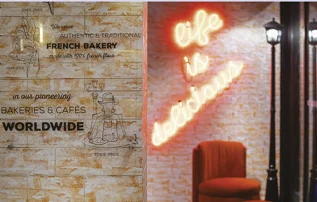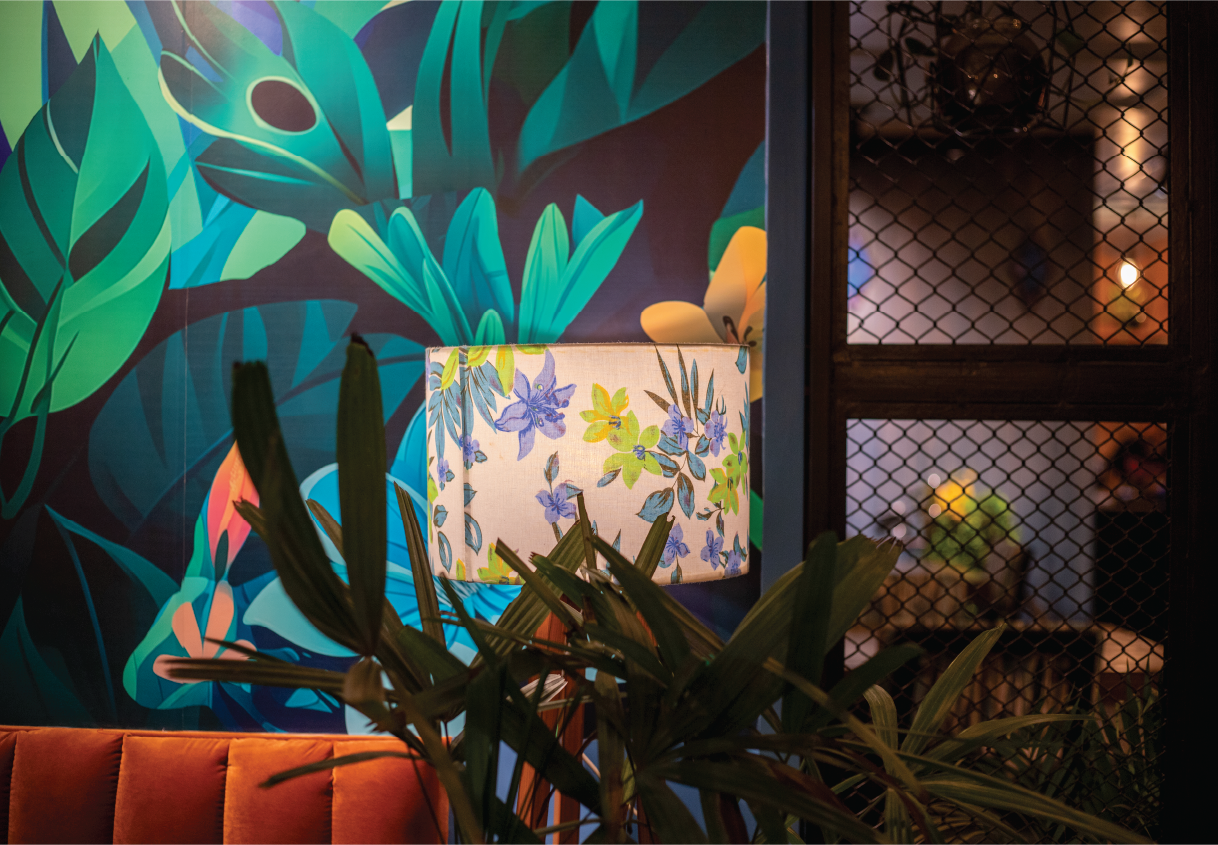
A Journey Of a Thai Culinary Excellence of and Artistic Innovation
We are sure that there are times when you crave some good tangy Thai flavours and also miss the vibrant experience of street life in Thailand. Naming from the famous street of Bangkok, Khao San is such a place where you can meet both. Founded by four friends – Bushra Haque Sarah, Syed Sameem Shahriyar, Taposh Ghosh, and Mustafid Raiyan Khan—Khao San is more than just a dining spot; it’s a passion project. After gaining popularity in Dhanmondi, Khao San has now made its mark in the heart of Gulshan. Despite being open for only a few months, the restaurant has already captured the hearts of diners with its delectable taste and unique interior. With the air infused with tantalising Thai flavours and the atmosphere adorned with bold hues with a pinch of earthy colours, the restaurant interior pays an ode to its famous Thai street namesake, Khao San Road. As guests step into this new branch, they might subconsciously reminisce about the interior of Dhanmondi and immediately be enveloped in a newer enchantment. The restaurant not only draws its name from the famous road but also matches the vibes of the lively and bustling area renowned for its vibrant nightlife and dynamic energy. Through careful design interventions, the restaurant’s interior captures this spirited ambiance, blending the bustling vibe of Khao San Road with a serene touch of nature. We designed Khao San Gulshan with the Dhanmondi branch in mind. We tried to maintain a similar essence,” said Sheefa. Like the debut branch, the interior has been done by Rahnuma Tasnim Sheefa, the principal architect of Parti.Studio. Once you’re inside Khao San Gulshan, you will consciously notice the wooden motifs on the main door, inspired by the lotus flowers of Thailand. The same motif is also reflected in the door knobs of washrooms and a partition door, creating a cohesive design throughout the space. The designer has carefully merged the wooden motifs with the glass, creating a screening that added a modern touch to the usual traditional design element. Upon entering the space, you will be greeted by a vibrant, real tuk-tuk. The dining area is mostly an open plan divided into several zones that are connected visually yet spaced out with mesh dividers and plants. There’s also a private room for larger groups. One of the seating zones features an elevated floor space where you will discover a wall composed of a wooden window with a stunning mural painted inside and designed beside a rustic doorframe. As the architect described, the entire space is very “instagrammable.”. You will find corners or elements to take dope pictures. With splashes of vibrant hues, warm tones, and moody ambient lighting, each nook and cranny has been designed to capture the eyes of the visitors, inviting them to take a closer look and explore the decor. The restaurant design mimics the scenic nature and happening city life of Thailand, interpreted to fit into the theme. Through closer inspection, you will be able to decipher that the city-influenced part of the restaurant has warm tones of orange, red, and yellow. On the other side, the nature part has an upper hand with cool tones of blues and greens. “Throughout the space, we introduced natural plants to keep the nature found. On a wall, you will find a huge illustration with an elephant, which is a vital character from the branding. The story goes like the elephant, after exploring the city, is moving from city to jungle,” added Sheefa. To keep up with the traditions of murals in the Khao San restaurants, the architect had to face some challenges. In the Dhanmondi branch of Khao San, you will find hand-painted murals; however, due to the building’s age and damp walls, hand-painting wasn’t feasible in the Gulshan branch. As a creative solution, Sheefa introduced illustration murals in sticker format, ensuring the same artistic touch while overcoming the challenges posed by the building’s condition. The amazing representation of the ideas was displayed in the form of illustrations by Mashqurur Belal Sabri. The architect took special care to include the implementation of our local craftsmen. All the furniture used in the restaurant is designed and crafted by local artisans. The decorative items, including the metal hanging lights, are also customised and locally made. One of the major setbacks of the restaurant space was its ceiling height, which is quite lower than the average. As a result, a false ceiling was barely an option. “Though I highly oppose using false ceilings, but at rare times when necessary for concealing wiring, considering the already limited height of the ceiling, installing them would only make the space feel cramped and claustrophobic. Therefore, we minimised the use of false ceilings and chose grid wiring in the original ceiling,” explained Sheefa. The architect designed the wiring grids on the original ceiling very innovatively. Some of the grids are functional; a few are added only to make the grid design complete. The decorative items are hung carefully, keeping careful alignment with the grids. The ACs have been camouflaged very interestingly, merged with the backgrounds, allowing the murals to flow seamlessly through the space without interruptions. The murals are very artistic, reflecting the hustle and bustle of Thai city life and its nature. Within a few months of its operation, the restaurant gained unparalleled popularity in the area and is mostly packed to capacity during the peak meal hours. The vibrant and colourful décor with artsy and picturesque style combined with affordable yet authentic Thai cuisine beckons customers from far and near to Khao San to enjoy a truly enjoyable gastronomic experience. Written By Kaniz F Supriya & Quazi Anika Afrin
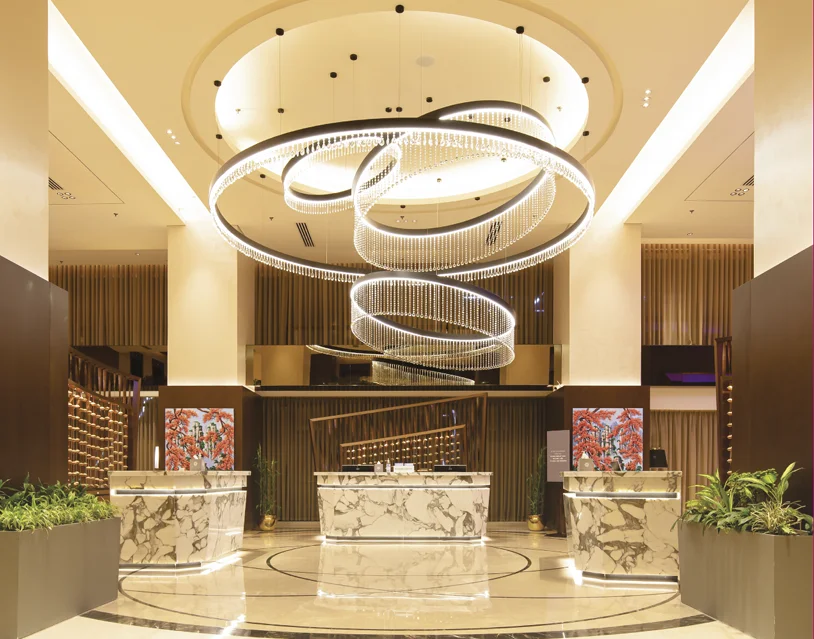
Reminiscing the memories in new urbanscape SHERATON DHAKA, BANANI
Since the 90s, Sheraton has been one of the prominent names in the luxury scene of Dhaka city. Many of us have fond memories of weekend morning strolls and fun with parents near the poolside landscapes. As the city grew, so did the urbanscape, the economy, and hence a shift of luxury being more contemporary with the time. Sheraton Dhaka in a new location in Banani is an excellent example of the recall value of a brand. The interesting friction with the prior location is that the city dwellers are still getting familiar with and accepting the nostalgia within the new vertical opulence. The contemporary and trendy expression is a boon to the new generation of entrepreneurs and business enthusiasts, alongside the youth crowd. The location of Banani is in a merging mesh of formal and informal zones, may it be corporate offices with the big business companies or a hub for youth to hang out and collaborate. “The new business model of the brand is to connect these dots,” shared Md. Al Amin, Hotel Manager and In-charge of Sales and Marketing. He also added, “Sheraton’s slogan is ‘Where the World Comes Together’ and Sheraton is community which is about ‘We’ rather than ‘I’.” A premium hotel is not just about a beautiful architecture or posh interiors serving the brand value, but the services and how the functionality works. One of the basic guidelines for any hotel is to design the circulation and utility of the spaces. As we visually experience the front of the house and its ambiance, the back of the house provides smooth services subconsciously yielding ease. Since 2016 the 81 years old operating Sheraton Brand became a part of Marriott International. This shift has been an improved revamping session for the brand protocols. As per the brand guidelines, all the designs are executed. High-end and prominent local architectural consultants and a Singaporean design consultancy firm collaborated with the Marriott International design and management team for the execution process. The active participation and suggestion of the local owner, a seasoned hotelier, added value to the output. The hotel has a gourmet café called Toastina, a buffet restaurant and alfresco named The Garden Kitchen, On the Rocks -a whiskey bar, and a high-end Japanese restaurant, Yumi. One of the biggest column-less ballrooms in the city, spanning approximately 8000 square feet. A club Lounge for Club Room Guests and for top-tier Marriott Bonvoy members, a gym with the best city view, spa facilities, and many other support features of a modern and upscale hotel. Marriott International is specific about the arrangement as they achieved the class over the years. Everything is per the standards, from the washroom amenities, mattress, and bed linen to the kitchen layout and room sizes. The restaurant has all freshly imported ingredients to maintain the quality. The hotel is a no-smoking zone. Due to the new branding value of communal developments, the sitting arrangements are for a larger group of people. “Sheraton being a full-service hotel does not just limit itself to bed and breakfast, but rather the ambiance ambiance and overall experience of the service. Sheraton has one of the largest hotel footprints overall within the Marriott’s Brands. Sheraton considered as a flagship in the Dhaka is region,” shared Mr. Al Amin. In an Exclusive Interview with Daniel J Muhor General Manager, Sheraton Dhaka 1. As per the memories of the 80/90’s people and kids, luxury hotels meant the Pan Pacific Sonargaon (existing) and the Sheraton Dhaka, at the present premises of Intercontinental. That shift of nostalgia from a lawn-based architecture to an urban upraised scraper. How do you feel this change is appropriate? There are advantages and disadvantages. People are experiencing a positive shift, just at times struggling between the present and previous location, but still adaptive. For better reference, we are addressing it more emphasized as Sheraton Dhaka, Banani. People are responding to the recall value of the brand. As the land occupancy is getting concentrated in Dhaka city with land as such from Banani, one of the most expensive ones in the world, it is tough to plan the layout horizontally. The location shifted alongside the architectural style from horizontal to vertical planning. Having the fact of generating revenues, every square foot matters. If land such as in Banani gets used for urban landscaping and ground-level outdoor spaces, it would have been tough for the owner to generate revenues. But we have kept an open alfresco area that serves as an outdoor landscape, and at the top, the poolside area adds to it as well. And the panoramic views as you go up the floors add a new experience. Overall, we feel it is an urban retreat within the hassle and bustle of the city. 2. Most people are observing the contrast between Banani supermarket and a five-star rated hotel. How was the selection of the property made keeping such an interesting combination? Initially, the Banani supermarket was a worrying factor. But the existing structure has been a great fortune. The podium coverage that we have is approximately 44000 square feet. And there are lots of examples of shared land-use systems of commercial spaces worldwide. Many premium hotels are operating this way. The owner is investing to improve the ambiance to smudge the contrast. Hence, the supermarket is getting upgraded, increasing its value and the property value parallel. The lower few levels of the market are louvered from outside. The entrance is more decorated, providing a better experience for the people visiting the market. The roots are important too, and the addition of Sheraton will cocreate the landmark. The users need help to be educated about the usability of the facilities in a better way. 3. Hotel and their hospitality differ in many experiential and served ways. How Sheraton, Dhaka is planning to be exceptional in this developing range of upcoming hotels? The hotel’s one of the best-selling points is one of the biggest pillars less ballroom, in a busy
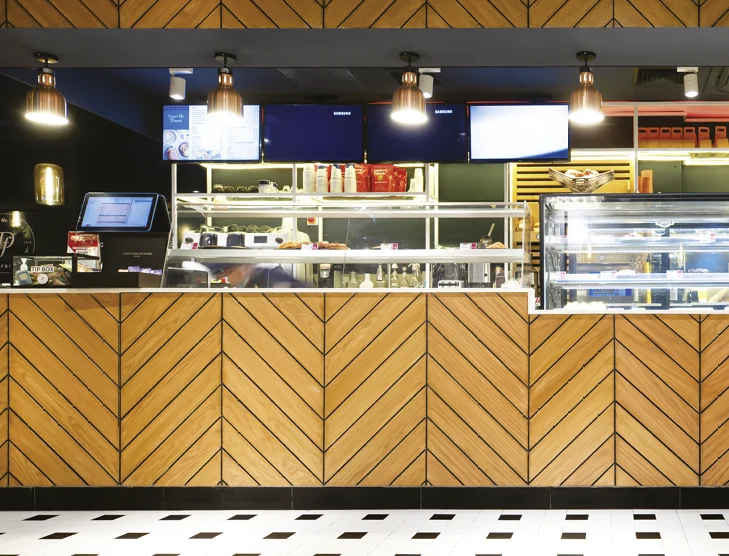
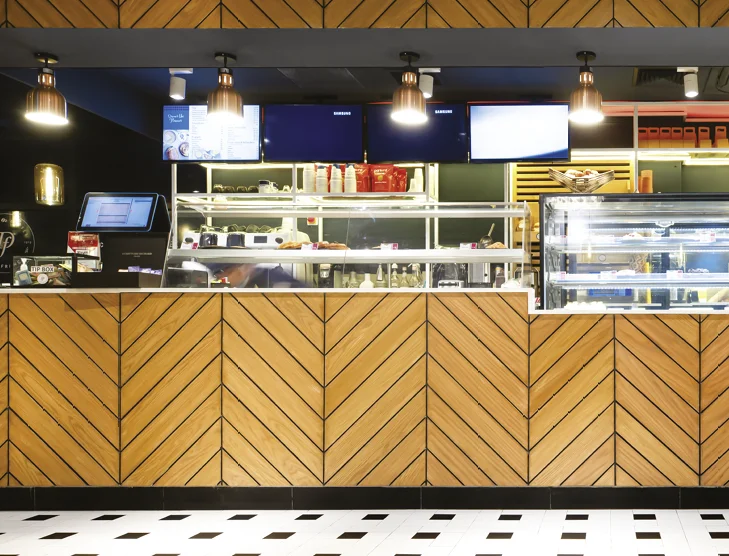
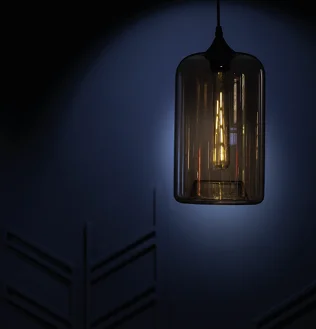
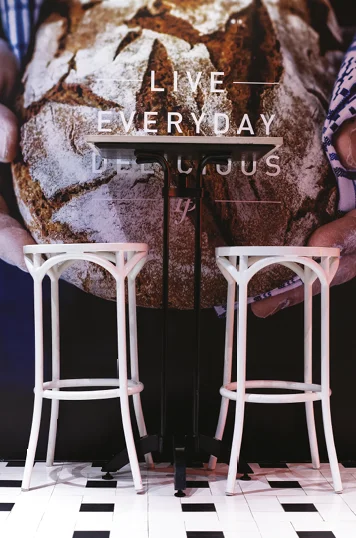 Delifrance’s baked items are made with flour from the Grands Moulins de Paris, a major French milling company operating since 1919. The recipes served follow the franchise standards, and the new recipes also get approved by Paris. Hence, the international-quality chefs bring to the table a range of savoury dishes alongside croissants and other finger foods.
Delifrance’s baked items are made with flour from the Grands Moulins de Paris, a major French milling company operating since 1919. The recipes served follow the franchise standards, and the new recipes also get approved by Paris. Hence, the international-quality chefs bring to the table a range of savoury dishes alongside croissants and other finger foods.
